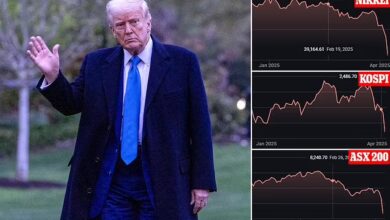14 People Dead In Hoarding Collapse In Mumbai, Why BMC Never Took Any Action Earlier.
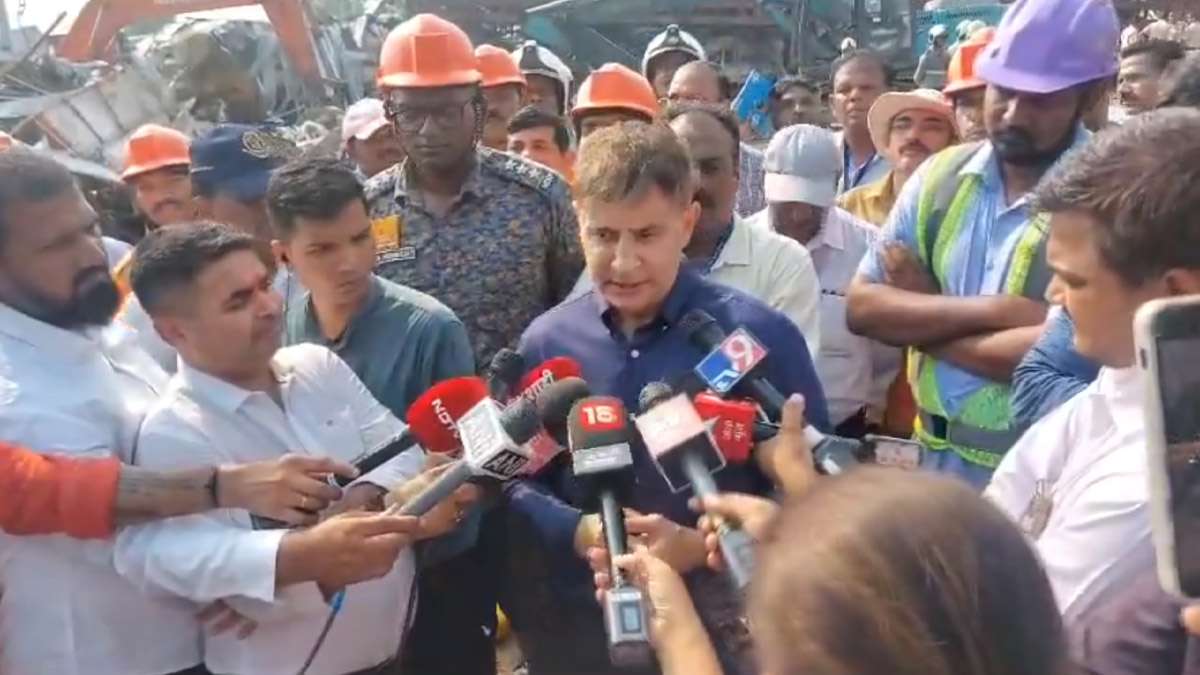
Was BMC sleeping before the hoarding collapsed. Why do all regulatory organisations only open their eyes after something happens, who would be responsible for the loss of 16 innocent lives?
The recent collapse of a massive hoarding in Mumbai’s Ghatkopar area has left a trail of devastation, claiming 16 lives and injuring over 70 people. The incident, which occurred during a dust storm and unseasonal rains, highlights the need for stricter regulations and accountability in urban infrastructure as well as the irresponsible behaviour of the regularities to prevent such tragedies.
The billboard, measuring 120 feet by 120 feet, was set up by Ego Media Pvt. Ltd., an advertising agency, and significantly exceeded the permissible size of 40 feet by 40 feet. The structure collapsed on a petrol pump, causing widespread destruction and chaos. The rescue operations, led by the Brihanmumbai Municipal Corporation (BMC), were delayed due to the proximity of a fuel station in the area.

Bhavesh Bhinde, the director of Ego Media, was arrested in Udaipur, Rajasthan, and brought to Mumbai to face legal proceedings. A case of culpable homicide not amounting to murder was registered against Bhinde, along with all directors, officials, and employees of Ego Media, at the Pant Nagar Police Station. The swift legal actions underscore the severity of the incident and the need for accountability. The quick legal actions show how serious the incident is and that those responsible must be held accountable.
The cost of BMC’s Inefficiency and Corruption
The incident also raises questions about the BMC’s preparedness for the monsoon season. Despite claims of completing pre-monsoon preparations, including surveying and pruning high-risk trees, the civic body recorded 163 incidents of tree fall in Mumbai and its suburbs within the first week of monsoon, resulting in three lives lost and several others injured. The ongoing works involving road digging have been attributed as one of the major causes of tree fall incidents, raising the need for more effective measures to prevent such incidents.
The question remains: Was the BMC sleeping on the job before the hoarding collapsed? Why did it take the loss of 16 innocent lives for the authorities to spring into action? The BMC has now initiated a city-wide survey of hoardings, but this comes too little, too late. The agency has also issued notices to the Central Railway and Western Railway, demanding the removal of oversized hoardings erected on their land.
The arrest of Bhavesh Bhinde, the director of Ego Media, is a step in the right direction, but it does not release the BMC and other regulatory bodies of their responsibility. These tragedies happen because there aren’t good systems to stop people from making illegal changes to private property, and those who do it aren’t punished severely.
The Ghatkopar tragedy is not an isolated incident. In the past decade, 97 people have lost their lives, and scores have been injured in three building collapses caused by illegal renovations. The lack of effective mechanisms to prevent illegal alterations on private property and impose harsh punishments on offenders has contributed to these tragedies.
The BMC’s limited powers to issue notices under the Maharashtra Regional Town Planning (MRTP) Act and the police’s ability to charge offenders under Section 304 of the Indian Penal Code, which carries a sentence of up to two years, a fine, or both, have proven insufficient in preventing such incidents.
How will the government ensure that regulatory bodies are held accountable for their negligence and that they prioritise public safety over other considerations?
To ensure that regulatory bodies are held accountable for their negligence and prioritise public safety over other considerations, the government must implement aggressive and strict actions.

Firstly, the government should establish a dedicated oversight committee tasked with monitoring regulatory bodies’ actions closely. This committee should conduct regular audits, enforce accountability, and mete out severe consequences for any lapses in upholding safety standards. Immediate disciplinary actions, such as suspension or removal of BMC officials found negligent, must be taken to send a clear message that public safety is non-negotiable.
The punishments that can be given to hold regulatory bodies accountable include suspensions of officials responsible for safety oversights, fines imposed on regulatory bodies for systemic failures, and legal actions against individuals found guilty of negligence. For instance, in cases of gross negligence leading to loss of life, regulatory officials can face suspension pending investigations and legal proceedings. Additionally, financial penalties can be imposed on regulatory bodies to emphasise the importance of upholding safety standards and ensuring public welfare.
Additionally, the government should require clear reporting of their decisions, how well they are doing their jobs, and if they are following safety rules. If any regulatory body is found to put other interests above public safety, they should face serious consequences, such as being reorganised or even shut down. By enforcing strict rules and making regulatory bodies accountable, the government can promote responsibility and make sure public safety is always the top priority in their decisions.
Why is BMC escaping from its own responsibility and instead accusing others?
The Lives Of Indian Citizens Have No Value For Regulatory Authorities, People Keep Dying Like Cockroaches In India Under Their Noses.
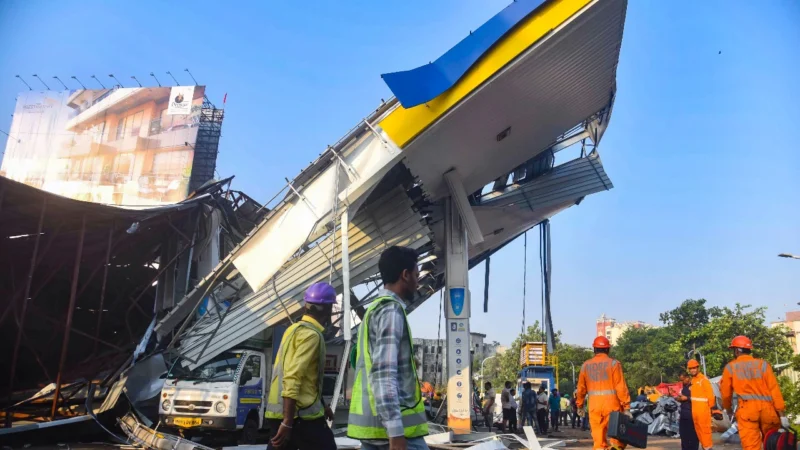
The Brihanmumbai Municipal Corporation (BMC), tasked with ensuring public safety, has failed miserably in its duties, and instead of taking responsibility, it is trying to shift the blame onto others. The hoarding, which was illegally constructed and significantly exceeded the permissible size, was allowed to stand for years without any intervention from the BMC. Despite being aware of its existence, the civic body did nothing to remove the structure or ensure its safety. It is clear that the BMC was more concerned with appeasing the advertising agency, Ego Media Pvt. Ltd., than protecting the lives of its citizens.
The arrest of Bhavesh Bhinde, the director of Ego Media, is a mere smokescreen to divert attention from the BMC’s own negligence. The fact remains that the BMC had the power and the responsibility to prevent this tragedy, but it chose to turn a blind eye to the violation of regulations.
The question remains: Why does the BMC continue to fail in its duty to protect its citizens? Is it because the lives of Indian citizens have no value for the regulatory authorities? Do they see us as mere cockroaches, to be crushed under their feet without a second thought?
Opinion
The government must take immediate action to hold the BMC accountable for its negligence and ensure that such incidents never happen again. The regulatory bodies must be empowered with stronger legal tools to prevent and punish violations that compromise public safety. The BMC’s performance should be regularly audited and made transparent, with clear, measurable performance indicators that prioritise public safety.
The Ghatkopar hoarding collapse is a tragic reminder of the consequences of regulatory negligence and the urgent need for reforms in urban infrastructure management. The government must act swiftly to address these issues and ensure that the lives of Indian citizens are valued and protected.

Why always something has to happen then only some action is taken?
The delay in taking action until after a tragic incident occurs is a recurring issue that raises serious concerns about the proactive measures of regulatory authorities. In the case of the Mumbai hoarding collapse in Ghatkopar, where 16 lives were lost, the pattern of inaction until a disaster strikes is evident from the responses of the Brihanmumbai Municipal Corporation (BMC) and other regulatory bodies.
Despite the BMC issuing three notices to the advertising agency responsible for the illegal hoarding, no action was taken to prevent the collapse. This lack of enforcement highlights a systemic failure to prioritise public safety over other considerations. The BMC’s reactive approach, waiting for tragedies to unfold before cracking down on violations, is a dangerous trend that puts lives at risk.
The BMC’s delayed action on illegal hoardings in Mumbai, following the Ghatkopar incident where 16 people died, shows a reactive approach to governance. The authorities only took immediate steps after the tragedy, raising doubts about their commitment and effectiveness. This tragic event should remind regulatory bodies to be proactive in identifying and fixing safety issues before they turn into disasters.
Waiting to act until a disaster strikes reveals a major flaw in the regulatory and governance system. The lack of preventive measures shows a failure to prioritise public safety and enforce regulations properly. The BMC’s inaction despite previous warnings, and the resulting tragedy in Ghatkopar, underline the urgent need for a shift to proactive and preventive strategies to avoid such disasters in the future.
Will BMC take Any Action On Soni Razdan For Speaking The Truth?
BMC and government always shuts the mouth of the people speaking against them.
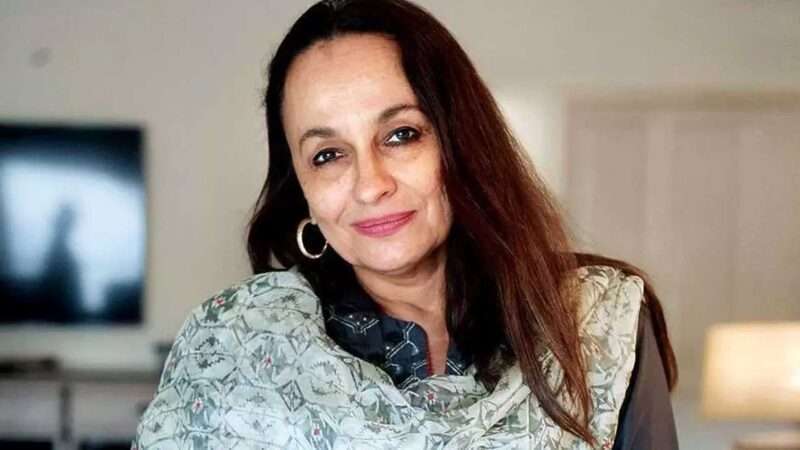
Actress Soni Razdan, known for her outspoken views, took to social media to express her frustration and question the Brihanmumbai Municipal Corporation’s (BMC) oversight in allowing the illegal billboard to stand for so long without taking any action. Her tweet, which tagged the BMC, asked why they only discovered the hoarding’s illegality after it had caused harm, and whether those responsible would be held liable for prosecution.
Razdan’s comments have sparked concerns about whether the BMC and the government will take any action against her for speaking out against their alleged negligence. Unfortunately, this is not an isolated incident, and there have been several instances in the past where individuals who have spoken out against the government or its agencies have faced repercussions.
In the past, there have been instances where the government and its agencies have attempted to silence critics and whistleblowers. For example, during the COVID-19 pandemic, Soni Razdan had questioned the BMC and Chief Minister Uddhav Thackeray’s claims about the availability of hospital beds and medical facilities, highlighting the struggles of her friend’s mother in accessing treatment. Her comments were seen as a critique of the government’s handling of the pandemic, and it remains to be seen whether she will face any backlash for speaking out.
Similarly, there have been cases where citizens who have lodged complaints or spoken out against government agencies have faced harassment or intimidation. For instance, a Ghatkopar resident had lodged a complaint about the illegal hoardings in the area, but it was allegedly ignored by the authorities. The timely redressal of his complaint may have averted the tragedy, but instead, the authorities failed to take action.
The BMC’s response to Soni Razdan’s comments will be closely watched, as it has a history of being reactive rather than proactive in addressing safety concerns. The appointment of a VJTI expert to investigate the reasons behind the Ghatkopar hoarding collapse is a step in the right direction, but it remains to be seen whether the BMC will take concrete actions to prevent such incidents in the future.
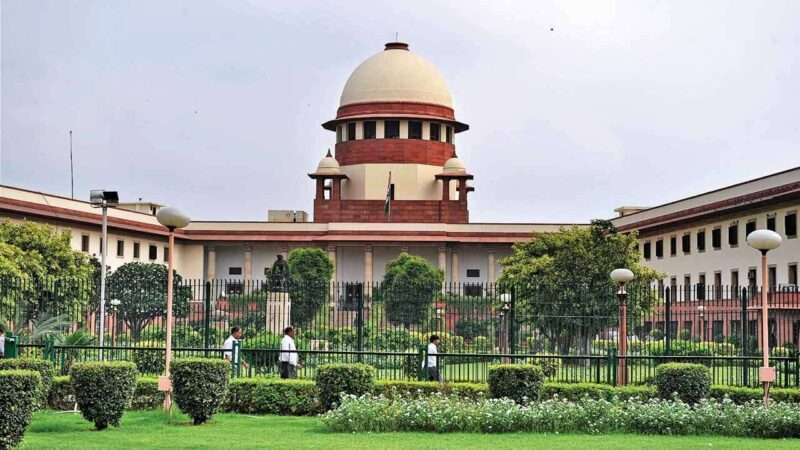
Will Indian Judiciary Stand Up For The Loss Of Life Of Innocent Indians?
Will the Judiciary Take Any Suo Moto Action On BMC?
The Indian judiciary must stand up and take immediate suo moto action against the Brihanmumbai Municipal Corporation (BMC) for its negligence and failure to protect the lives of innocent citizens. How many more lives must be lost before the judiciary intervenes to hold the BMC accountable? The recent tragic collapse of an illegal billboard in Mumbai’s Ghatkopar, which claimed 16 lives, is a stark reminder of the BMC’s utter disregard for public safety. Despite being aware of the unauthorised structure and issuing multiple notices, the BMC failed to take any concrete action to remove the hazard or ensure its safety. This systemic failure has resulted in the devastating loss of innocent lives, and the judiciary must not remain silent in the face of such egregious negligence.
The Indian judiciary has a responsibility to safeguard the rights and lives of its citizens, as enshrined in the Constitution. However, the judiciary’s track record in recent years has been disappointing, with a drift away from protecting civil liberties and personal freedoms. The judiciary’s silence in the face of blatant violations of human rights and attacks on constitutional institutions has led to a weakening of its role as a check on the executive and regulatory bodies. The judiciary must break this silence and assert its authority to ensure that the BMC and other regulatory bodies prioritise public safety over all other considerations.
The Ghatkopar tragedy is not an isolated incident; it is part of a larger pattern of regulatory failures that have resulted in the loss of countless lives. In the past decade, 97 people have lost their lives in three building collapses caused by illegal renovations, with the BMC failing to take effective action to prevent such incidents. The judiciary’s inaction in these cases has only encouraged the BMC and other regulatory bodies to continue prioritising other interests over public safety.
The judiciary’s reluctance to intervene in cases of regulatory negligence is further compounded by the glacial pace of the Indian judicial system. Cases often drag on for 10-15 years or more, leaving victims and their families without justice or closure. This delay in delivering justice erodes public trust in the judiciary and undermines its credibility as a guardian of rights and liberties. The judiciary must take urgent steps to streamline its processes and ensure that cases involving loss of life are given priority and resolved swiftly.
The Indian judiciary must take inspiration from the actions of judges during the Emergency, who stood up to the all-powerful executive and fought to uphold civil liberties. The judiciary must not shy away from confronting the executive and regulatory bodies when they fail to fulfil their duties. The courts must act independently and use their power to make the BMC and other regulatory agencies take real steps to stop such tragedies from happening again.
The Indian judiciary must stand up and take suo moto action against the BMC for its negligence in the Ghatkopar tragedy. The judiciary must send a strong message that regulatory bodies cannot escape accountability for their actions and that public safety must be the top priority. The judiciary must also take steps to streamline its processes and ensure that cases involving loss of life are resolved swiftly, restoring public trust in the judicial system. The time for the judiciary to act is now, before more innocent lives are lost due to regulatory negligence.
Can only the owner of the billboard be held responsible?
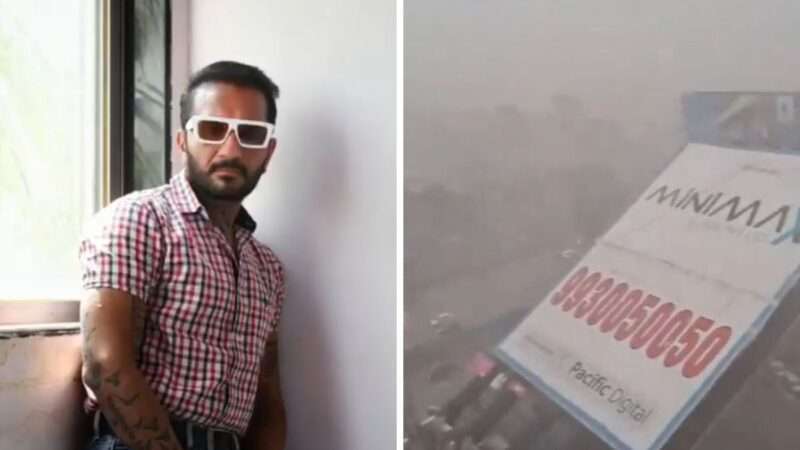
The responsibility for the tragic collapse of the illegal billboard in Mumbai’s Ghatkopar cannot be solely pinned on the owner of the billboard, Bhavesh Bhinde. The accountability extends to the Brihanmumbai Municipal Corporation (BMC) and other regulatory bodies responsible for enforcing safety regulations. The BMC ignored warnings and left a large, illegal structure standing for over a year. This shows a big problem with how they manage safety and rules. Blaming just the billboard owner is too simple because the real issue is the BMC’s failure to do its job.
The BMC, as the regulatory authority, must be held accountable for its irresponsible and negligent actions that allowed such a hazardous structure to exist unchecked. The BMC’s failure to take timely action despite clear violations and safety concerns demonstrates a severe lack of oversight and enforcement. Immediate measures must be taken to conduct a thorough audit of all billboards in Mumbai, remove all illegally placed billboards violating norms, and take legal action against Ego Media, the agency responsible for the collapsed billboard. Additionally, a committee must be established to address complaints and ensure compliance with BMC policies on billboards.
Viewpoint
The BMC should be held responsible for their failure to act, which led to the loss of innocent lives in Ghatkopar. This tragedy shows the need for urgent action to prevent similar incidents. Regulatory bodies must be accountable for their mistakes, and strict measures should be put in place to ensure public safety is always a top priority. The BMC’s delay and negligence caused this disaster, emphasising the need to improve safety rules and enforcement to avoid future tragedies.
The Indian courts need to step in and make sure organisations like the BMC are held responsible for their mistakes and put public safety first. The collapse of the illegal billboard in Ghatkopar, which killed 16 people, shows the serious consequences of not doing so. The courts should not stay silent but should take action on their own to get justice for the victims and stop such events from happening again. By doing this, the courts can help rebuild trust in the justice system and make sure that those in charge are transparent and accountable. It’s crucial for the courts to act now and make it clear that public safety is the top priority, and if it’s ignored, there will be serious consequences.

